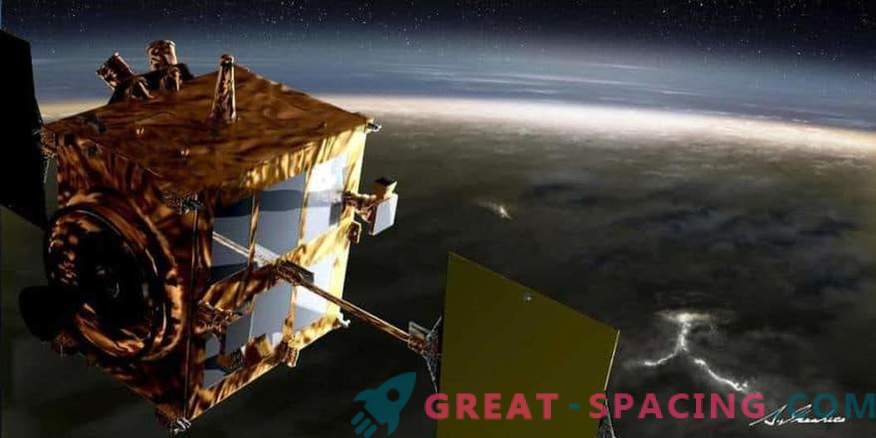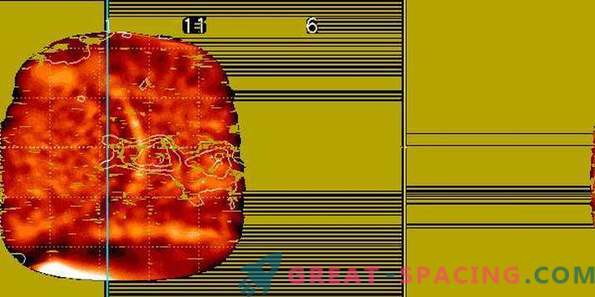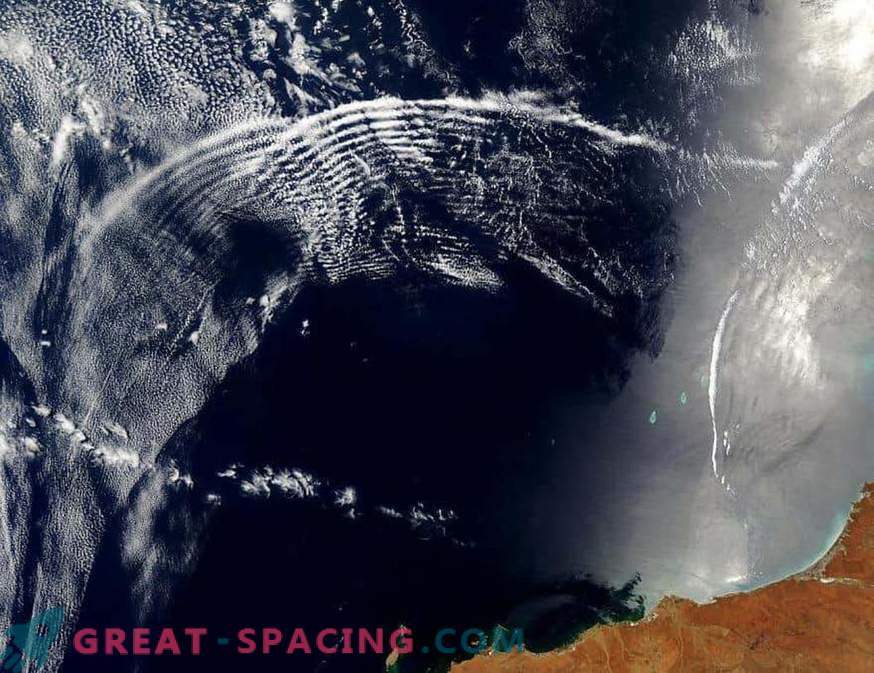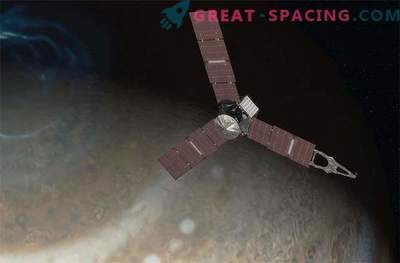
Japanese spaceship Akatsuki through the eyes of the artist
If everything goes well, in 2027 the Russian-American mission Venera-D will go to the second planet from the Sun. Despite the inhospitable nature of this red-hot world, a huge number of spacecraft were sent to it. The last was the Japanese Akatsuki mission, which was lucky to discover something unusual.
The Japanese Akatsuki spacecraft was launched in 2010 to explore the planet from a height. It was planned that in the same year the device will be fixed in orbit, and the mission itself will last about 2 years. But due to technical problems, the maneuver was completed only in 2015. Despite the 5-year delay, Akatsuki found something interesting in the atmosphere.

Analysis of a gravitational wave on Venus. The orange images were taken with the Akatsuki long-wave infrared camera (LIR), and the blue (upper right) was captured with an ultraviolet thermal imager (UVI). The solid line marks the planet's equator, and the dotted line marks the terminator (day / night). You already know about the greenhouse effect, acid rain and high pressure (92 times Earthly) in the atmosphere of Venus. But scientists did not expect the planet to meet the arrival of the spacecraft with a smile! Yes, it is a smile! More precisely, it was a “gravitational wave” (not to be confused with space-time oscillations in space) in an atmosphere that took the form of a smile.
In 2017, this feature will be called the equatorial jet of Venus. What is it? This is an arc-shaped element located in the cloud cover of the planet. This “resting region” covers about 10,000 km in diameter. But this is not the strangest thing.
Scientists knew that the atmosphere of Venus moves much faster than the axial rotation of the planet. Therefore, in this region, the clouds also moved at a speed of 100 m / s, which was much ahead of the planetary rotation. There is nothing unexpected. I was surprised that the giant “smile” lagged behind the axial movement of the planet. It seemed that she hung over the mountain range.

This data shows the gravitational wave in motion observed by the Akatsuki spacecraft. The analysis showed that the wave of Venus was located between the upper troposphere and the lower stratosphere. Further studies using computer models showed that the air flowing through mountainous terrain forms an equatorial jet, which then rises to cloudy peaks in the form of a fixed curve.
Researchers believe that a wave is created by a mechanism resembling the situation on Earth in mountainous areas (when air flows over bumpy surfaces). But the exact mechanism for creating such air arrays has not yet been determined. We can only say that the dynamics of the atmosphere of Venus at a depth is more complex than previously thought.

Waves in Earth's atmosphere
Interestingly, this is not the first strange formation in the atmosphere of Venus. For example, in 1973, the device Mariner-10 noticed among the clouds a huge structure in the shape of the letter Y, whose movement seemed independent of the total cloud array. Let's hope that future missions, like Venus-D, will be able to find a clue to this phenomenon.











































